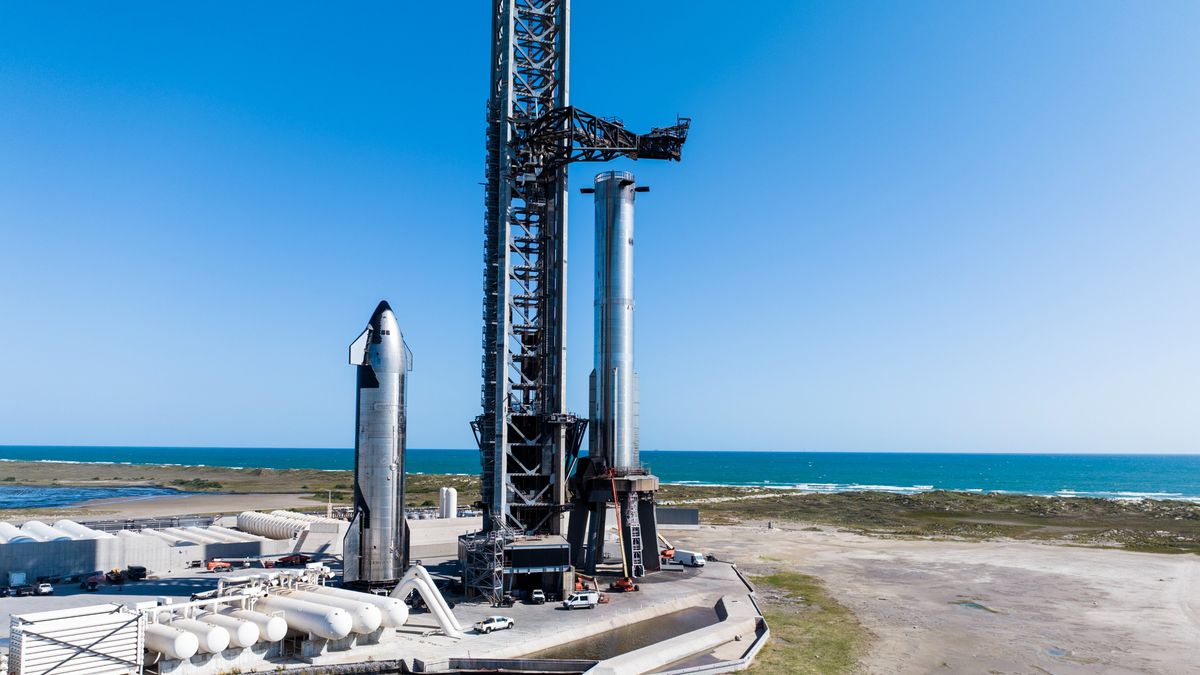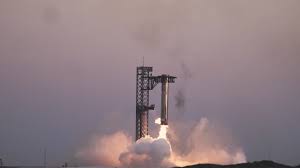SpaceX Successfully Launches Starship for the 6th Time

SpaceX Successfully Launches Starship for the 6th Time
Introduction: SpaceX has achieved another milestone in its ambitious space exploration goals with the successful launch of Starship for the sixth time. This launch is particularly significant as it marks a key step forward in SpaceX’s plans to revolutionize space travel and ultimately make human life multi-planetary. Starship, designed to carry both crew and cargo on missions to the Moon, Mars, and beyond, has been a central part of SpaceX’s long-term vision. This latest success brings the company one step closer to realizing its goal of creating a fully reusable spacecraft that can dramatically reduce the cost of space exploration. In this article, we take a closer look at the significance of this successful launch, the progress of the Starship program, and the implications it holds for the future of space travel.
The Significance of Starship’s 6th Launch: Starship’s sixth launch is another successful test of its capabilities, signaling that SpaceX is steadily moving closer to making the spacecraft fully operational. The vehicle, which is the largest and most powerful rocket ever built, is designed to transport up to 100 passengers and a significant amount of cargo into space. Each successful test launch brings SpaceX closer to its ultimate goal of using Starship for a wide range of missions, including trips to the Moon and Mars.
The success of this launch is critical for SpaceX’s plans to support NASA’s Artemis program, which aims to return astronauts to the lunar surface by the mid-2020s. Starship is set to play a pivotal role in this mission, as it will be the vehicle used for landing astronauts on the Moon. Moreover, the long-term ambition for Starship is to serve as the vessel that will carry humanity to Mars, a vision that has captivated the imaginations of space enthusiasts and experts alike.
What makes this launch particularly noteworthy is that it was conducted with minimal issues, a key indicator that SpaceX’s engineers are refining Starship’s systems and addressing the challenges encountered in previous tests. While the program is still in its experimental phase, each successful launch brings more confidence to SpaceX’s capabilities and brings humanity one step closer to interplanetary travel.
The Role of Starship in SpaceX’s Ambitious Goals: The Starship program is a critical part of Elon Musk’s broader vision for the future of space exploration. Musk has long stated that his ultimate goal is to establish a self-sustaining colony on Mars, and Starship is central to this mission. The spacecraft is designed to be a fully reusable system, which would drastically reduce the cost of space travel and allow for more frequent and affordable missions.
Starship’s success could pave the way for a new era in space exploration, where missions to the Moon, Mars, and even beyond are within reach. With the spacecraft’s massive payload capacity, it could enable not only crewed missions to other planets but also the transport of large amounts of cargo to support space habitats, research stations, and potentially the building of infrastructure on other celestial bodies. The versatility of Starship, from launching satellites to ferrying humans to the stars, gives SpaceX a competitive edge in the evolving space industry.
Additionally, Starship is also a key player in the future of space tourism, with Musk suggesting that the spacecraft could eventually be used to send private passengers on trips to low Earth orbit and even lunar missions. This could revolutionize space tourism and open up new opportunities for the public to experience space travel, creating a thriving industry that expands the scope of space exploration beyond governmental agencies.
Challenges Ahead for Starship and SpaceX: Despite the success of the sixth launch, SpaceX still faces significant challenges in making Starship operational. The spacecraft is unlike any other in its size, weight, and complexity, and as with any new technology, there are bound to be hurdles to overcome. For instance, one of the biggest challenges facing the program is the development of the Starship’s heat shield, which is critical for re-entry and landing. SpaceX has been working on refining this technology to ensure that the spacecraft can withstand the extreme heat generated during atmospheric re-entry.
Moreover, while the Starship is designed to be fully reusable, the company needs to demonstrate that it can achieve rapid reusability. SpaceX has already proven the viability of reusable rockets with its Falcon 9 program, but Starship’s larger size and more complex systems present new challenges. Achieving rapid reusability would be a game-changer for space exploration, dramatically reducing the costs of missions and making frequent interplanetary travel a reality.
Another challenge for SpaceX is regulatory approval and collaboration with governmental agencies like NASA. While the company has already secured contracts with NASA for Artemis, further collaboration will be needed to integrate Starship into the larger space exploration framework. As with any major space mission, there will be regulatory and safety protocols that need to be met, which could take time.
The Future of Space Travel and SpaceX’s Role: SpaceX’s success with Starship has the potential to transform the space industry in profound ways. With Starship, SpaceX aims to open the door to affordable and sustainable space travel, both for scientific purposes and for future human colonization of other planets. As the Starship program continues to evolve, it could become the centerpiece of interplanetary missions, from trips to the Moon to more ambitious expeditions to Mars.
Looking ahead, the success of Starship’s sixth launch is a clear indication that SpaceX is on the right track to revolutionizing space travel. While challenges remain, the progress made so far suggests that SpaceX has the vision, resources, and determination to overcome them. With the ongoing development of Starship, the dream of making humanity a multi-planetary species seems closer than ever before.
In conclusion, SpaceX’s successful launch of Starship for the sixth time is a significant milestone in the journey toward revolutionizing space travel. With Starship, SpaceX is paving the way for future missions to the Moon, Mars, and beyond, positioning itself as a leader in the space industry. While obstacles remain, each successful test launch brings the world one step closer to the era of interplanetary exploration and beyond.









